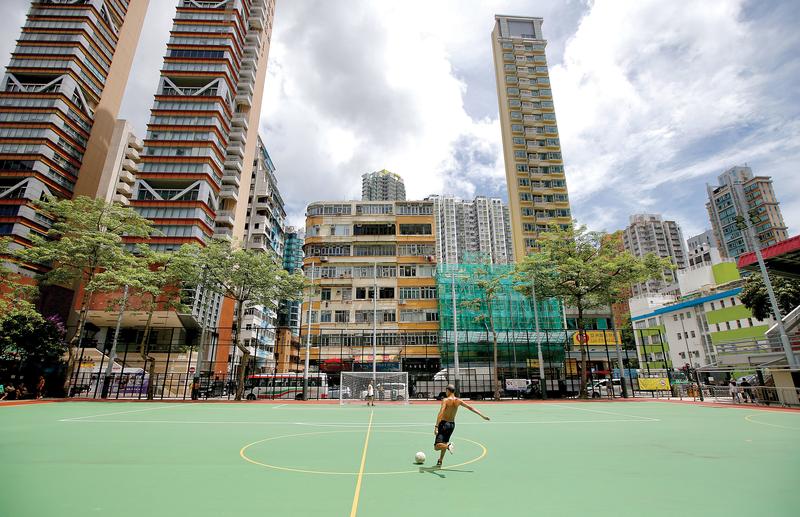 A solitary man has the field to himself in Macpherson Playground, Mong Kok. (RAYMOND CHAN / CHINA DAILY)
A solitary man has the field to himself in Macpherson Playground, Mong Kok. (RAYMOND CHAN / CHINA DAILY)
Few cities have as many public playgrounds as Hong Kong. From Wong Chuk Hang to Sheung Shui, from Tuen Mun to Tseung Kwan O, there is no dearth of sprawling green courts covered in astroturf for people to play in or watch others at play without incurring any costs.
According to an article published on M+ website and written by the artists Fan Lok-yi and Sampson Wong — winners of a Design Trust fellowship to research the evolution of Hong Kong’s public play spaces — the city’s first batch of playgrounds emerged as a result of a 1929 initiative to keep children from underprivileged homes off the streets. Instead of hanging out in street corners, which increased their chances of getting up to mischief, young people were encouraged to invest their surplus energy developing athletic skills and sportsman spirit in the new, cheerfully designed neighborhood play areas.
The strategy probably paid off. In the mesmerizingly beautiful black and white photos taken by Leo K. K. Wong, in the middle of the last century, children play against the enormous sculptural structures in a Hong Kong public playground with a sense of abandon that is the very antithesis of the idea of materialistic Hong Kong.
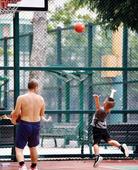 A little boy enjoys his time out in Maple Street Playground, Sham Shui Po. (RAYMOND CHAN / CHINA DAILY)
A little boy enjoys his time out in Maple Street Playground, Sham Shui Po. (RAYMOND CHAN / CHINA DAILY)
Hong Kong people seem naturally drawn to doing physical exercise. Even in the height of summer, it’s likely that a Hong Kong playground will have at least one person doing laps around the play court or knocking a ball about, under the full-on midday glare of the sun. It’s not unusual to see people on their way back home from work stopping by a public playground to catch snatches of a game — maybe even have a go at netting a basketball.
In a city notorious for its space crunch, Hong Kong’s public playgrounds often double as sit-out areas, thus providing a service to the local community, including to those who may not be particularly athletic. These are inclusive, non-discriminating spaces, welcoming to anyone passing through their gates.
The playing fields of Hong Kong foster the spirit of tolerance and conviviality and are among some of the city’s most valuable assets that we sometimes take for granted.
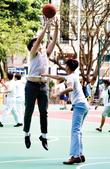 Passersby in formal shoes have a go at basketball in Southorn Playground, Wan Chai. (RAYMOND CHAN / CHINA DAILY)
Passersby in formal shoes have a go at basketball in Southorn Playground, Wan Chai. (RAYMOND CHAN / CHINA DAILY)
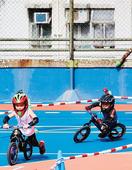 Children bike-race each other in Siu Hei Playground, Tuen Mun. (RAYMOND CHAN / CHINA DAILY)
Children bike-race each other in Siu Hei Playground, Tuen Mun. (RAYMOND CHAN / CHINA DAILY)
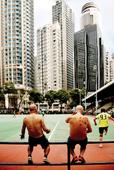 Two gentlemen cool it off after a game in Southorn Playground, Wan Chai. (RAYMOND CHAN / CHINA DAILY)
Two gentlemen cool it off after a game in Southorn Playground, Wan Chai. (RAYMOND CHAN / CHINA DAILY)
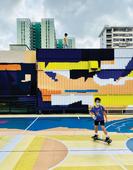 Skateboarding against the backdrop of a lively mural in On Ting Playground, Tuen Mun. (RAYMOND CHAN / CHINA DAILY)
Skateboarding against the backdrop of a lively mural in On Ting Playground, Tuen Mun. (RAYMOND CHAN / CHINA DAILY)
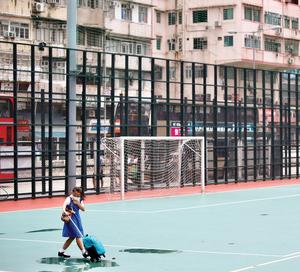 A girl walks past the soccer court in Maple Street Playground, Sham Shui Po. (RAYMOND CHAN / CHINA DAILY)
A girl walks past the soccer court in Maple Street Playground, Sham Shui Po. (RAYMOND CHAN / CHINA DAILY)
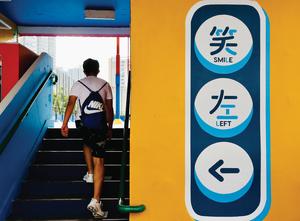 Cheerful signage in Siu Hei Playground, Tuen Mun. (RAYMOND CHAN / CHINA DAILY)
Cheerful signage in Siu Hei Playground, Tuen Mun. (RAYMOND CHAN / CHINA DAILY)


